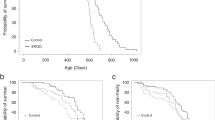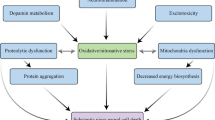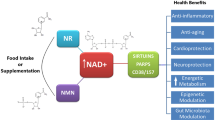Abstract
Walnuts have high levels of the omega-3 fatty acid alpha-linolenic acid (C18:3n-3, ALA) and the omega-6 fatty acid linoleic acid (C18:2n-6, LA). Previous research has demonstrated that pre-treatment of BV-2 microglia with walnut extract inhibited lipopolysaccharide (LPS)-induced activation of microglia. As an extension of that study, the effects of walnut-associated fatty acids on BV-2 microglia were assessed. BV-2 murine microglia cells were treated with LA, ALA, or a combination of LA+ALA prior to or after exposure to LPS. Nitric oxide (NO) and tumor necrosis factor-alpha (TNF-alpha) were measured in cell-conditioned media. Cyclooxeganse-2 (COX-2) and inducible nitric oxide synthase (iNOS) expression were assessed in BV-2 microglia. Both LA and ALA protected against LPS-induced increases in NO, iNOS, COX-2, and TNF-alpha when used before LPS exposure. When BV-2 microglia were treated with fatty acids after LPS, only COX-2 and TNF-alpha were significantly attenuated by the fatty acids. There was no synergism of LA+ALA, as the LA+ALA combination was no more effective than LA or ALA alone. Fatty acids, like those found in walnuts, may protect against production of cytotoxic intermediates and cell-signaling molecules from microglia and may prove beneficial for preventing age- or disease-related neurodegeneration.





Similar content being viewed by others
References
Dwyer, J.B., and D.A. Ross. 2016. Modern microglia: novel targets in psychiatric neuroscience. Biological Psychiatry 80 (7): e47–e49.
Hanisch, U.K. 2002. Microglia as a source and target of cytokines. Glia 40 (2): 140–155.
Ladeby, R., M. Wirenfeldt, D. Garcia-Ovejero, C. Fenger, L. Dissing-Olesen, I. Dalmau, and B. Finsen. 2005. Microglial cell population dynamics in the injured adult central nervous system. Brain Research Reviews 48 (2): 196–206.
Hemmer, K., L. Fransen, H. Vanderstichele, E. Vanmechelen, and P. Heuschling. 2001. An in vitro model for the study of microglia-induced neurodegeneration: involvement of nitric oxide and tumor necrosis factor-alpha. Neurochemistry International 38 (7): 557–565.
Perry, V.H. 2010. Contribution of systemic inflammation to chronic neurodegeneration. Acta Neuropathologica 120 (3): 277–286.
Romano, A.D., G. Serviddio, A. de Matthaeis, F. Bellanti, and G. Vendemiale. 2010. Oxidative stress and aging. Journal of Nephrology 23 (Suppl 15): S29–S36.
Wang, J.Y., L.L. Wen, Y.N. Huang, Y.T. Chen, and M.C. Ku. 2006. Dual effects of antioxidants in neurodegeneration: direct neuroprotection against oxidative stress and indirect protection via suppression of glia-mediated inflammation. Current Pharmaceutical Design 12 (27): 3521–3533.
Borst, K., M. Schwabenland, and M. Prinz. 2018. Microglia metabolism in health and disease. Neurochemistry International. https://doi.org/10.1016/j.neuint.2018.11.006.
Rangarajan, P., A. Karthikeyan, and S.T. Dheen. 2016. Role of dietary phenols in mitigating microglia-mediated neuroinflammation. Neuromolecular Medicine 18 (3): 453–464.
Hornedo-Ortega, R., A.B. Cerezo, R.M. de Pablos, S. Krisa, T. Richard, M.C. García-Parrilla, and A.M. Troncoso. 2018. Phenolic compounds characteristic of the mediterranean diet in mitigating microglia-mediated neuroinflammation. Frontiers in Cellular Neuroscience. https://doi.org/10.3389/fncel.2018.00373.
Poddar, J., M. Pradhan, G. Ganguly, and S. Chakrabarti. 2019. Biochemical deficits and cognitive decline in brain aging: intervention by dietary supplements. Journal of Chemical Neuroanatomy 95: 70–80.
Poulose, S.M., D.F. Bielinski, and B. Shukitt-Hale. 2013. Walnut diet reduces accumulation of polyubiquitinated proteins and inflammation in the brain of aged rats. Journal of Nutritional Biochemistry 24 (5): 912–919.
Poulose, S.M., M.G. Miller, and B. Shukitt-Hale. 2014. Role of walnuts in maintaining brain health with age. Journal of Nutrition 144 (4 Suppl): 561S–566S.
Joseph, J.A., B. Shukitt-Hale, and L.M. Willis. 2009. Grape juice, berries, and walnuts affect brain aging and behavior. Journal of Nutrition 139 (9): 1813S–1817S.
Arab, L., and A. Ang. 2015. A cross sectional study of the association between walnut consumption and cognitive function among adult US populations represented in NHANES. Journal of Nutrition, Health, and Aging 19 (3): 284–290.
Gorji, N., R. Moeini, and Z. Memariani. 2018. Almond, hazelnut and walnut, three nuts for neuroprotection in Alzheimer’s disease: a neuropharmacological review of their bioactive constituents. Pharmacology Research 129: 115–127.
Willis, L.M., B. Shukitt-Hale, V. Cheng, and J.A. Joseph. 2009. Dose-dependent effects of walnuts on motor and cognitive function in aged rats. British Journal of Nutrition 101 (8): 1140–1144.
Fisher, D.R., S.M. Poulose, D.F. Bielinski, and B. Shukitt-Hale. 2017. Serum metabolites from walnut-fed aged rats attenuate stress-induced neurotoxicity in BV-2 microglial cells. Nutritional Neuroscience 20 (2): 103–109.
Willis, L.M., D.F. Bielinski, D.R. Fisher, N.R. Matthan, and J.A. Joseph. 2010. Walnut extract inhibits LPS-induced activation of BV-2 microglia via internalization of TLR4: possible involvement of phospholipase D2. Inflammation 33 (5): 325–333.
Hayes, D., M.J. Angove, J. Tucci, and C. Dennis. 2016. Walnuts (Juglans regia) Chemical composition and research in human health. Critical Reviews in Food Science and Nutrition 56 (8): 1231–1241.
Simopoulos, A.P. 2002. The importance of the ratio of omega-6/omega-3 essential fatty acids. Biomedical Pharmacotherapy 56 (8): 365–379.
Simopoulos, A.P. 2008. The importance of the omega-6/omega-3 fatty acid ratio in cardiovascular disease and other chronic diseases. Experimental Biology and Medicine 233 (6): 674–688.
Loef, M., and H. Walach. 2013. The omega-6/omega-3 ratio and dementia or cognitive decline: a systematic review on human studies and biological evidence. Journal of Nutrition in Gerontology and Geriatrics 32 (1): 1–23.
Tootoonchi, A.S., M. Doosti, K. Abdi, G. Amin, and M. Goodarzi. 2013. Differences in omega-6/omega-3 ratio and polyunsaturated fatty acid content in five Iranian walnuts (Juglans regia) cultivars. Indian Journal of Agricultural Sciences 83: 234–236.
Muradoglu, F.H., I. Oguz, K. Yildiz, and H. Yilmaz. 2010. Some chemical composition of walnut (Juglans regia L.) selections from Eastern Turkey. African Journal of Agricultural Research 5: 2379–2385.
Lei, E., K. Vacy, and W.C. Boon. 2016. Fatty acids and their therapeutic potential in neurological disorders. Neurochemistry International 95: 75–84.
Romano, A., J.B. Koczwara, C.A. Gallelli, D. Vergara, M.V. Micioni Di Bonaventura, S. Gaetani, and A.M. Giudetti. 2017. Fats for thoughts: an update on brain fatty acid metabolism. International Journal of Biochemistry and Cellular Biology 84: 40–45.
Zárate, R., N. El Jaber-Vazdekis, N. Tejera, J.A. Pérez, and C. Rodríguez. 2017. Significance of long chain polyunsaturated fatty acids in human health. Clinical and Translational Medicine 6 (1): 25.
Blondeau, N., C. Nguemeni, D.N. Debruyne, M. Piens, X. Wu, H. Pan, X. Hu, C. Gandin, R.H. Lipsky, J.C. Plumier, A.M. Marini, and C. Heurteaux. 2009. Subchronic alpha-linolenic acid treatment enhances brain plasticity and exerts an antidepressant effect: a versatile potential therapy for stroke. Neuropsychopharmacology 34 (12): 2548–2559.
Carey, A.N., D.R. Fisher, J.A. Joseph, and B. Shukitt-Hale. 2013. The ability of walnut extract and fatty acids to protect against the deleterious effects of oxidative stress and inflammation in hippocampal cells. Nutritional Neuroscience 16 (1): 13–20.
Ikeguchi, S., Y. Izumi, N. Kitamura, S. Kishino, J. Ogawa, A. Akaike, and T. Kume. 2018. Inhibitory effect of the gut microbial linoleic acid metabolites, 10-oxo-trans-11-octadecenoic acid and 10-hydroxy-cis-12-octadecenoic acid, on BV-2 microglial cell activation. Journal of Pharmacological Sciences 138 (1): 9–15.
Pribis, P., and B. Shukitt-Hale. 2014. Cognition: the new frontier for nuts and berries. American Journal of Clinical Nutrition 100 (Suppl 1): 347S–352S.
Kiso, Y. 2011. Pharmacology in health foods: effects of arachidonic acid and docosahexaenoic acid on the age-related decline in brain and cardiovascular system function. Journal of Pharmacological Sciences 115 (4): 471–475.
Aktan, F. 2004. iNOS-mediated nitric oxide production and its regulation. Life Sciences. 75 (6): 639–653.
Wang, H., Q. Hao, Q.R. Li, X.W. Yan, S. Ye, Y.S. Li, N. Li, and J.S. Li. 2007. Omega-3 polyunsaturated fatty acids affect lipopolysaccharide-induced maturation of dendritic cells through mitogen-activated protein kinases p38. Nutrition 23 (6): 474–482.
Monmai, C., S.H. Go, I.S. Shin, S. You, D.O. Kim, S. Kang, and W.J. Park. 2018. Anti-inflammatory effect of Asterias amurensis fatty acids through NF-κB and MAPK pathways against LPS-stimulated RAW264.7 Cells. Journal of Microbiology and Biotechnology 28 (10): 1635–1644.
Popiolek-Barczyk, K., and J. Mika. 2016. Targeting the Microglial Signaling Pathways: New Insights in the Modulation of Neuropathic Pain. Current Medicinal Chemistry 23 (26): 2908–2928.
Fitzpatrick, F.A. 2004. Cyclooxygenase enzymes: regulation and function. Current Pharmaceutical Design 10 (6): 577–588.
Han, Y.M., M. Jeong, J.M. Park, M.Y. Kim, E.J. Go, J.Y. Cha, K.J. Kim, and K.B. Hahm. 2016. The ω-3 polyunsaturated fatty acids prevented colitis-associated carcinogenesis through blocking dissociation of β-catenin complex, inhibiting COX-2 through repressing NF-κB, and inducing 15-prostaglandin dehydrogenase. Oncotarget 7 (39): 63583–63595.
Inoue, T., M. Tanaka, S. Masuda, R. Ohue-Kitano, H. Yamakage, K. Muranaka, H. Wada, T. Kusakabe, A. Shimatsu, K. Hasegawa, and N. Satoh-Asahara. 2017. Omega-3 polyunsaturated fatty acids suppress the inflammatory responses of lipopolysaccharide-stimulated mouse microglia by activating SIRT1 pathways. BBA Molecular and Cell Biology of Lipids 1862 (5): 552–560.
Chen, X., S. Wu, C. Chen, B. Xie, Z. Fang, W. Hu, J. Chen, H. Fu, and H. He. 2017. Omega-3 polyunsaturated fatty acid supplementation attenuates microglial-induced inflammation by inhibiting the HMGB1/TLR4/NF-κB pathway following experimental traumatic brain injury. Journal of Neuroinflammation 14 (1): 143. https://doi.org/10.1186/s12974-017-0917-3.
Kraft, A.D., C.A. McPherson, and G.J. Harry. 2009. Heterogeneity of microglia and TNF signaling as determinants for neuronal death or survival. Neurotoxicology 30 (5): 785–793.
Olmos, G., and J. Lladó. 2014. Tumor necrosis factor alpha: a link between neuroinflammation and excitotoxicity. Mediators of Inflammation 2014: 861231. https://doi.org/10.1155/2014/861231.
Su, H., R. Liu, M. Chang, J. Huang, Q. Jin, and X. Wang. 2018. Effect of dietary alpha-linolenic acid on blood inflammatory markers: a systematic review and meta-analysis of randomized controlled trials. European Journal of Nutrition 57 (3): 877–891.
Navarini, L., A. Afeltra, G. Gallo Afflitto, and D.P.E. Margiotta. 2017. Polyunsaturated fatty acids: any role in rheumatoid arthritis? Lipids in Health and Disease 16 (1): 197.
Calder, P.C. 2009. Polyunsaturated fatty acids and inflammatory processes: New twists in an old tale. Biochimie 91 (6): 791–795.
Hennessy, A.A., R.P. Ross, R. Devery, and C. Stanton. 2011. The health promoting properties of the conjugated isomers of α-linolenic acid. Lipids 46 (2): 105–119.
Wysoczański, T., E. Sokoła-Wysoczańska, J. Pękala, S. Lochyński, K. Czyż, R. Bodkowski, G. Herbinger, B. Patkowska-Sokoła, and T. Librowski. 2016. Omega-3 fatty acids and their role in central nervous system - a review. Current Medicinal Chemistry 23 (8): 816–831.
Park, J., J.S. Min, B. Kim, U.B. Chae, J.W. Yun, M.S. Choi, I.K. Kong, K.T. Chang, and D.S. Lee. 2015. Mitochondrial ROS govern the LPS-induced pro-inflammatory response in microglia cells by regulating MAPK and NF-κB pathways. Neuroscience Letters 584: 191–196.
Corsi, L., B.M. Dongmo, and R. Avallone. 2015. Supplementation of omega 3 fatty acids improves oxidative stress in activated BV2 microglial cell line. International Journal of Food Science and Nutrition 66 (3): 293–299.
Kaur, P., I. Heggland, M. Aschner, and T. Syversen. 2008. Docosahexaenoic acid may act as a neuroprotector for methylmercury-induced neurotoxicity in primary neural cell cultures. Neurotoxicology 29 (6): 978–987.
Park, B.S., and J.O. Lee. 2013. Recognition of lipopolysaccharide pattern by TLR4 complexes. Experimental & Molecular Medicine 6 (45): e66. https://doi.org/10.1038/emm.2013.97.
Wong, S.W., M.J. Kwon, A.M. Choi, H.P. Kim, K. Nakahira, and D.H. Hwang. 2009. Fatty acids modulate Toll-like receptor 4 activation through regulation of receptor dimerization and recruitment into lipid rafts in a reactive oxygen species-dependent manner. Journal of Biological Chemistry. 284 (40): 27384–27392.
De Smedt-Peyrusse, V., F. Sargueil, A. Moranis, H. Harizi, S. Mongrand, and S. Layé. 2008. Docosahexaenoic acid prevents lipopolysaccharide-induced cytokine production in microglial cells by inhibiting lipopolysaccharide receptor presentation but not its membrane subdomain localization. Journal of Neurochemistry 105 (2): 296–307.
Shabani, M., M. Nazeri, S. Parsania, M. Razavinasab, N. Zangiabadi, K. Esmaeilpour, and F. Abareghi. 2012. Walnut consumption protects rats against cisplatin-induced neurotoxicity. Neurotoxicology 33 (5): 1314–1321.
Harandi, S., L. Golchin, M. Ansari, A. Moradi, M. Shabani, and V. Sheibani. 2015. Antiamnesic effects of walnuts consumption on scopolamine-induced memory impairments in rats. Basic and Clinical Neuroscience 6 (2): 91–99.
Zou, J., P.S. Cai, C.M. Xiong, and J.L. Ruan. 2016. Neuroprotective effect of peptides extracted from walnut (Juglans Sigilata Dode) proteins on Aβ25-35-induced memory impairment in mice. Journal of Huazhong University of Science and Technology: Medical sciences 36 (1): 21–30.
Sánchez-González, C., C.J. Ciudad, V. Noé, and M. Izquierdo-Pulido. 2017. Health benefits of walnut polyphenols: an exploration beyond their lipid profile. Critical Reviews in Food Science and Nutrition 57 (16): 3373–3383.
Pribis, P., R.N. Bailey, A.A. Russell, M.A. Kilsby, M. Hernandez, W.J. Craig, T. Grajales, D.J. Shavlik, and J. Sabatè. 2012. Effects of walnut consumption on cognitive performance in young adults. British Journal of Nutrition 107 (9): 1393–1401.
Acknowledgments
This work was supported by USDA intramural and California Walnut Commission. In memory of James A. Joseph, our valued colleague and friend.
Author information
Authors and Affiliations
Corresponding author
Additional information
Publisher’s Note
Springer Nature remains neutral with regard to jurisdictional claims in published maps and institutional affiliations.
Rights and permissions
About this article
Cite this article
Carey, A.N., Fisher, D.R., Bielinski, D.F. et al. Walnut-Associated Fatty Acids Inhibit LPS-Induced Activation of BV-2 Microglia. Inflammation 43, 241–250 (2020). https://doi.org/10.1007/s10753-019-01113-y
Published:
Issue Date:
DOI: https://doi.org/10.1007/s10753-019-01113-y




